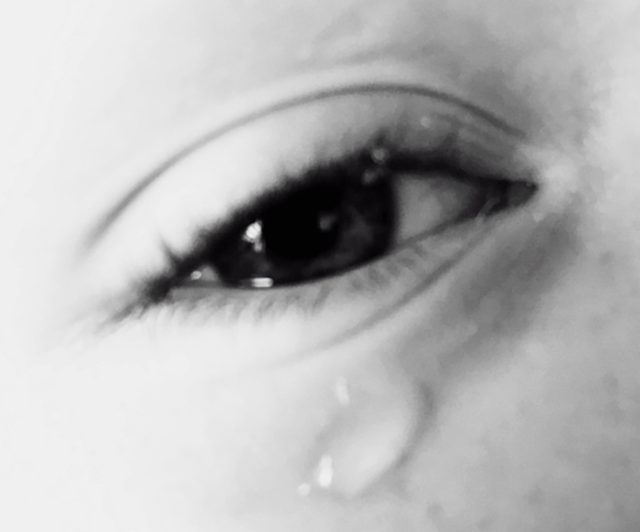This question comes in from the very lovely, and very curious, Kayla, aged six, who can sometimes be found over at My little babóg blog. Kayla would like to know…
Where do tears come from?

Where do tears come from?
Tears are made by little glands above our eyes, called tear glands, or lacrimal glands. There is one gland above each eye; each produce tears that travel to the eye through tiny pipes, called ducts. There are a number of these tear (lacrimal) ducts behind our upper eye lids.
Our tear ducts are constantly producing tears, to keep our eyes clean and moist, but we don’t usually even notice. When we blink we wipe the tear fluid over our eyes, keeping them moist. This fluid is then drained off from the eyes through more ducts. It is only when we start producing a lot more tears that we start to notice them. The ducts that drain the fluid away cannot cope with all the extra tears and they start to run down our cheeks.
What are tears made of?
Tears are basically made of slightly salty water. They also contain enzymes that kill bacteria and vitamins and minerals. Some tears contain proteins, called hormones, that can change how we feel.
Why do we cry?
Scientists are still working this one out. We do know that we cry different kinds of tears in response to different things. Science defines crying as the process of producing tears in response to an emotion – be it sadness, fear, anger or happiness. When we produce tears to clear something out of our eye or to moisten the eye… Then we call this lacrimation.
So how does it all work? Well, the emotional crying seems to be triggered as a response to activity in a part of the brain called the hypothalamus. This part of the brain responds to our different emotions and can produce chemicals, called neurotransmitter, that will travel to specific parts of the body and induce a response. In the case of crying, the neurotransmitter produced is called acetylcholine and it triggers tear production in the lacrimal gland.
The reason why our brain responds in this way to emotions can vary. Babies, for example, cry to communicate with us… Telling us the are tired, hungry or in pain. This makes sense as they do not have many other forms of communication available to them. But why do we still cry here we are all grown up? It may be that crying creates other responses in our bodies, our heart rate changes, our breathing alters and other chemicals are released into the body. Crying can make us feel better.
Crying also allows us to show people how we feel! We may have evolved our crying mechanism to let people know what we are feeling, or to get sympathy or support.
Sometimes we cry when we see others hurt or sad and this created empathy, something that allows us build strong bonds and create supportive communities.
What different types of tears are there?
As I said above, we have three types of tears and they are…
Basal tears – these are the ones we produce to keep our eyes moist;
Reflex tears – we produce these in response to something else, usually something that is irritating our eye… From a small piece of dirt to a strong chemical, such as the vapour off a cut onion.
Emotional tears – these are the ones that get switched on by our emotions, even if we try to suppress them! These tears make us human!
Very interesting easy and straightforward info no struggling to understand
Thanks Daleen, I’m glad you liked this post.
Cool
Does release of tears relieve fluid pressure ie ref glaucoma ?
Hi David, the tears drainage system and the drainage system for aqeuous humor (fluid of the eye) are two different systems; I am not aware that tear release will have any direct affect on glaucoma.
Only sitting down babog free with little miss to read this to her now. She’s delighted. Thank you!! Now we have to go off and investigate different types of cries lol
Oh Naomi she’s going to be chuffed with herself tomorrow when I read her this. Will report back with her reaction ?
I hope she liked it Kellie and tell her I said thanks again, for the great question.
Oh that is Great, I hope it helps answer his question!
My son asked this very question the other week too, so I will be sending him this answer immediately 🙂